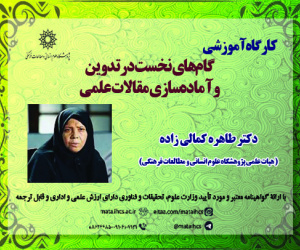نسخه ایرانی مقیاس تجدیدنظرشده دلبستگی بزرگسال: روایی و پایایی در جمعیت عمومی (مقاله علمی وزارت علوم)
درجه علمی: نشریه علمی (وزارت علوم)
آرشیو
چکیده
هدف: مقیاس تجدیدنظرشده دلبستگی بزرگسال، سنجه خودگزارش دهی شناخته شده ای برای اهداف پژوهشی است. ساختار سه عاملی این مقیاس، علی رغم فقدان شواهدی که از ویژگی های روان سنجی آن حمایت کنند، سال ها در جمعیت های ایرانی به کار گرفته شده است. مطالعه حاضر هدف در بررسی ساختار عاملی، روایی همگرا و پایایی مقیاس تجدیدنظرشده دلبستگی بزرگسال در بزرگسالان جامعه ایرانی داشت. روش: نمونه ای متشکل از 605 شرکت کننده (354 زن، 251 مرد)، به طور تصادفی و با هدف تحلیل عاملی به دو نمونه مجزا (302 = 2 n، 303 = 1 n) تقسیم شدند. علاوه بر مقیاس تجدیدنظرشده دلبستگی بزرگسال، سنجه هایی از ذهنی سازی، بدتنظیمی هیجان و اختلال شخصیت مرزی اجرا شدند. تحلیل عاملی اکتشافی و تأییدی برای ارزیابی ساختارهای عاملی پیشنهادشده در نسخه اصلی به کار گرفته شدند. یافته ها: در مجموع، تحلیل عاملی حاکی از آن بود که ساختار دوعاملی (اضطراب و اجتناب) برازش بهتری با داده ها دارد. به دلیل بار عاملی ضعیف، شش گویه حذف شدند و در نتیجه مقیاسی 12 گویه ای به دست آمد. مضاف بر این، اضطراب و اجتناب با ابزارهای مرتبط با دلبستگی همبستگی معنا داری نشان دادند (001/0p<) و همسانی درونی شان نیز قابل قبول بود (به ترتیب α برابر با 83/0 و 76/0). نتیجه گیری: یافته های ما با بنیان های نظری پیشین همخوان بود و از نسخه ایرانی مقیاس تجدیدنظرشده دلبستگی بزرگسال برای استفاده در جمعیت عمومی حمایت کرد.Iranian Adaptation of the Revised Adult Attachment Scale: Validity and Reliability in the General Population
Aim: The Revised Adult Attachment Scale (RAAS) is a well-established self-report measure for research purposes. Its three-factor structure has been employed in Iranian populations for years, despite the lack of evidence to support its psychometric properties. The current study aimed to assess the factor structure, convergent validity, and reliability of RAAS in Iranian community adults. Method: A sample of 605 participants (354 females, 251 males) was randomly divided into two samples (n 1 = 303, n 2 = 302) for factor analytic purposes. Along with RAAS, measures of mentalizing capacity, emotion dysregulation and borderline personality disorder were administered. Exploratory and confirmatory factor analyses were applied to evaluate the factor structures proposed for its original version. Results: Overall, factor analyses suggested the two-factor structure (i.e., anxiety and avoidance) to be the better fit for the data. Due to weak factor loading, six items were removed, resulting in a 12-item scale. Furthermore, Anxiety and avoidance demonstrated significant correlations with attachment-related instruments (p<.001) and their internal consistencies were also acceptable (α = .83 and .76, respectively). Conclusion: Our findings were congruent with previous theoretical underpinnings and provided support for the Iranian adaptation of RAAS in the general population.









